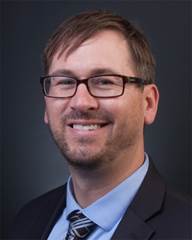From June 2019 to May 2020, a rising opioid epidemic, coupled with the COVID-19 pandemic, resulted in a record-high number of drug overdose deaths in a single year.
How best to help people who are struggling with opioid addiction get access to the treatment they need – especially in rural areas, where the opioid crisis is rampant and access to specialized treatment is rare?
First, we need to increase the number of clinicians who are able to prescribe treatment. Second, we need to increase the number of patients receiving evidence-based treatment, say the authors of a new study published in the journal Substance Abuse.
The team of clinicians and researchers turned to Project ECHO to see if its telementoring model, with long-proven success in the treating hepatitis C, could be leveraged to treat opioid use disorder.
Buprenorphine, a partial opioid, has been shown to be an effective treatment, allowing patients to manage their withdrawal symptoms without the euphoric effects of a full-agonist opioid. Clinicians can prescribe the medication in their primary care offices, rather than an in-patient facility, so it also reduces the stigma of seeking treatment.
For decades, the federal government required Drug Enforcement Agency-licensed clinicians to complete additional training in order to prescribe buprenorphine, but recently the requirements were streamlined so no additional training is needed for a physician to treat up to 30 patients.
Despite 15 years of encouragement from medical, governmental and local communities, there continues to be a severe shortage of active prescribers.
The researchers conducted the study in a rural, multispecialty network in central New York. They used the Project ECHO model at eight clinics in three counties, to teach rural clinicians how to treat opioid use disorder and encourage participants to take the additional DEA training.
Rural clinicians attended weekly meetings for 90 minutes, during which they learned about communication strategies, the integration of trauma-informed and harm-reduction approaches, and special considerations in buprenorphine treatment, such as pregnancy or mental health conditions, among other topics. In these meetings, one or two participants presented a de-identified patient case to seek advice from their colleagues.
After one year and 44 sessions, the research team found success in both of its initial goals: there were more authorized prescribers of buprenorphine and more patients (270) prescribed treatment. In addition, after 180 days, nearly 81% of the patients were continuing treatment – an important milestone indicating a better chance of a long-term favorable outcome. Project ECHO, they concluded, was a “highly effective model for increasing access to this evidence-based treatment.”

James Anderson, PhD, clinical psychologist at the Bassett Medical Center in Cooperstown, N.Y.
“I am so happy that we were able to introduce an approach that brings life-saving treatment to an area that is often lacking in resources,” said James Anderson, PhD, lead author of the study and a clinical psychologist at the Bassett Medical Center in Cooperstown, N.Y.
“I hope this project introduces to the literature a method of assessing treatment retention that is replicable for practice-based researchers, and is consistent with the sort of easy-to-access, difficult-to-be-kicked-out approach to treatment that we seek to provide and encourage.”
Anderson and his colleagues conclude: “Though there is no magic-bullet solution to this devastating and crippling public health problem, this study describes a process that is feasible for primary care clinicians and their colleagues.”
Since 2003, Project ECHO’s telementoring model has been used to tackle the world’s greatest challenges in health care, education, journalism and more. Headquartered at the University of New Mexico Health Sciences Center in Albuquerque, NM, Project ECHO is empowering local community providers to improve the well-being of people around the world. Join us today, in our mission to touch 1 billion lives by 2025.


